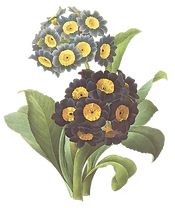You Can't Beat Beets
- Cynthia Thomas
- Feb 21, 2017
- 3 min read

We all had foods we hated growing up. I remember my mom serving many a bland vegetable out of can: asparagus, peas, pickled beets. We had to 'try' them – under the watchful eye of my father. Oh, we kids got creative. Sometimes we'd stuff them in Wonder bread, other times hide them in potatoes, and as a last resort, drown them in milk.
No wonder when a friend gave me some beet starter plants, I relegated them to the corner of the vegetable bed and let them grow so big they got the size of baseballs and tasted just as leatherly.
Imagine my surprise when I found some beautiful blonde beets in the organic grocery complete with lovely green tops and a sign that said, ‘The New SuperFood’. When I got them home, they cleaned up easily and roasted deliciously with some other veggies. A nice balsamic reduction – just vinegar and maple syrup cooked down ten minutes – turned a side dish into a gourmet treat.
And to top it off, beets are as nutritious as they are delicious. Scientists say that certain unique pigment antioxidants in this root and its top greens have been found to offer protection against coronary artery disease and stroke, lower cholesterol levels within the body, and have anti-aging effects.
Who knew beets were the fountain of youth?
Botanically, this tuberous root vegetable belongs to the Amaranthaceae family, in the beta genus. Its scientific name is Beta vulgaris. Swiss chard is another member of the beta genus grown for its edible leaves.
Cold Weather Plants
If you are planning to grow beets, the first thing to know is that they’re considered a cool season crop. Unlike many vegetables, they will not thrive in the summer heat but can manage nicely in frost and almost freezing temperatures. You can start seeds in March/April, and sow them again from June to September for a late crop.
This root veggie grows quickly and comes in many different varieties - deep red, yellow or white bulbs - and different shapes, too. If you can afford it, get a couple seed packs to see what works best in your garden and on your table.
According to the Old Farmer’s Almanac this is what you’ll need to get started:
A soil pH above 5.5–6 is best, otherwise growth will be stunted. (They say beets are a good indicator of soil pH, but quite honestly we’ve never tested ours.)
Till in aged manure before planting. Beets require especially good nutrition and a high phosphorus level to germinate. Go easy on nitrogen however, an excess will cause sprawling greens and tiny bulbs beneath the soil.
Wait until soil reaches 50 degrees before planting (You can place black plastic over your vegetable bed to help it heat up faster).
Plant seeds ½ inch deep and 1-2 inches apart.
Make sure soil remains moist for germination.
In zones with low moisture and rainfall, soak the seeds for 24 hours before planting. (I like to do this with most seeds I plant, unless they’re tiny).
If too many of your plants germinate, let them grow a little, then harvest for nice, tender leaves to add to your salad. Beet greens have a delicious and distinctive flavor, and were once the only part of the plant harvested.
Your beets should be ready to eat in 50 – 70 days!
Fresh beets can be stored in the refrigerator for about a week. Clip off the tops to keep them fresher for longer. Leave about one inch of stem on each beet, and store the greens separately.
For root cellar type storage, make sure you brush off any soil clinging to these crops (don't wash), then store in a cool, dry place. An unheated closet might do, or put them in a cooler in your basement.
Beets can be frozen, canned and pickled.
Last thing to consider before going crazy with your beets is that they have the highest sugar content of all vegetables. In fact, in many places beets are grown for use as a sweetener.
As with all good things, moderation is recommended.
Note: Between 10-15% of the population is genetically unable to break down betacyanin pigment. A friend of mine got quite concerned and went to the doctor when it looked like there was blood in her urine. The pink tinge is a harmless condition. There is a warning for individuals with known history of oxalate urinary tract stones to avoid eating an excess of beet greens.























Comments